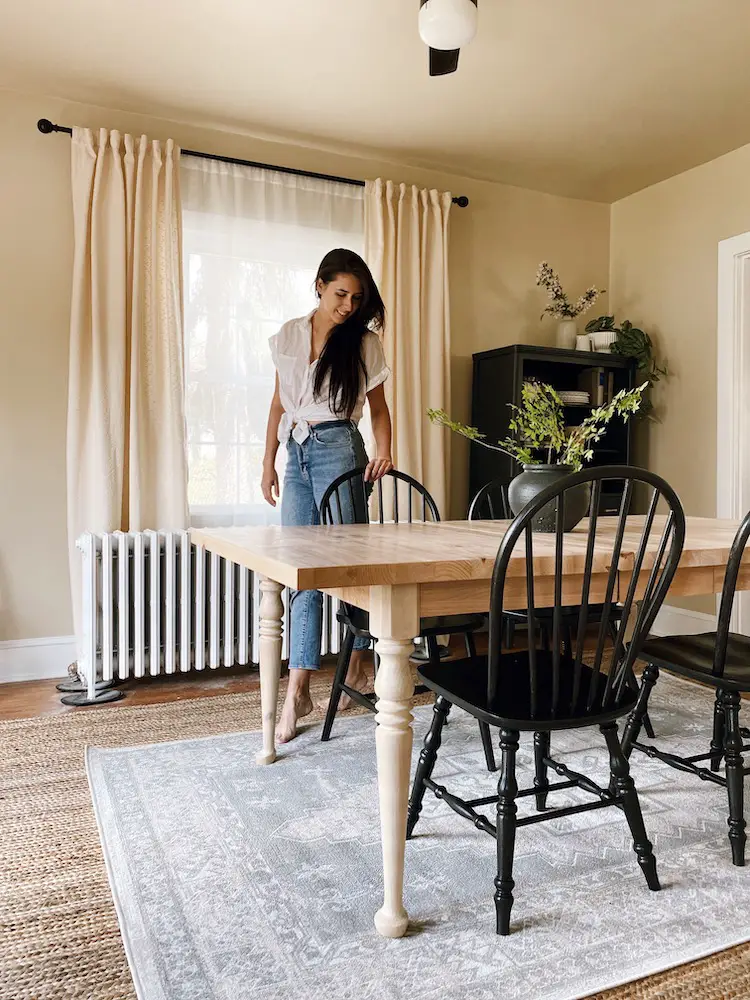Just how to Choose the Perfect Dining Room Table Legs for Your Home Design
Just how to Choose the Perfect Dining Room Table Legs for Your Home Design
Blog Article
An In-depth Consider Eating Table Leg Styles: Discovering the Suitable Match
Choosing the best eating table leg design is essential for both aesthetic charm and useful performance. For those with bigger tables, trestle legs make sure tough support, whereas barrette legs introduce a mid-century contemporary ambiance with their minimal design. The x-shaped legs mix contemporary design with enhanced security.
Traditional 4 Legs
Amongst the numerous types of eating table leg styles, the traditional four-leg layout stays a timeless option for lots of houses. 4 legs supply well balanced support, making certain the table continues to be stable and capable of bearing significant weight (dining room table legs).
From a visual viewpoint, the traditional four-leg design can be quickly adjusted to different indoor styles. Whether crafted from wood, metal, or a combination of materials, these legs can be elaborately carved, streamlined and minimalistic, or anything in between. Their flexibility permits them to match both rustic and modern setups seamlessly.
Moreover, the straightforward structure of the four-leg layout assists in convenience of activity and positioning within a space. Unlike even more complicated bases, this design minimizes blockages, providing ample legroom for diners. In recap, the traditional four-leg dining table leg style marries withstanding style with sensible performance, making it a sharp option for those looking for both kind and feature in their dining furnishings.
Stand Base
Typically celebrated for its elegant and space-efficient layout, the pedestal base is a distinguished choice to the conventional four-leg configuration in eating table leg styles. Without edge legs, restaurants are afforded better flexibility of movement, making it an ideal selection for round and oblong tables that promote more intimate and comprehensive events.
Furthermore, the stand base's central assistance can manage significant weight, enabling for using larger tabletops, such as marble or thick wood. This stamina coupled with its visual versatility makes the stand base a popular choice in both standard and modern indoor setups. It can flawlessly incorporate with various style motifs, from traditional style to minimal modernity. The central column itself uses a canvas for detailed designs and imaginative expressions, including an element of visual rate of interest under the table. In summary, the pedestal base integrates performance with design, making it an improved and useful alternative for varied eating environments.
Trestle Legs
Trestle legs provide a durable and timeless structure for eating tables, characterized by their straight cross-bracing and sturdy support beams. Originating from middle ages times, this great site style has advanced yet retained its necessary framework, making it a perennial favorite in both conventional and modern setups. The central trestle beam, frequently supported by 2 or even more upright blog posts, supplies exceptional stability, permitting for bigger table sizes without the requirement for additional legs.
A substantial benefit of trestle leg tables is the enough legroom they supply. Unlike tables with 4 edge legs, the absence of blockages at the table's sides offers unimpeded space for chairs and restaurants, improving comfort and accessibility. This makes trestle tables ideal for suiting bigger celebrations, whether in a dining-room or a reception hall.
From rustic farmhouse to sleek contemporary designs, trestle legs can be customized to suit specific preferences. Their long-lasting charm and practical additional reading benefits make trestle legs an engaging choice for those looking for both style and usefulness in their eating table.
Hairpin Legs

The charm of barrette legs depends on their simplicity and flexibility - dining room table legs. Readily available in a variety of materials, including steel and brass, they can be finished in various colors to complement different interior styles. Whether matched with a rustic wooden tabletop or a contemporary glass surface, hairpin legs effortlessly mix functionality with a touch of classic beauty
Longevity is an additional noteworthy function of hairpin legs. Despite their fragile look, these legs are engineered to bear substantial weight, ensuring the table continues to be steady and safe and secure. In addition, they are reasonably simple to set up, making them a popular choice for DIY enthusiasts and specialist furnishings makers alike.
X-Shaped Legs

Built from products such as steel, timber, or a mix of both, X-shaped legs can be customized to match various style choices. Steel legs often offer a streamlined and industrial feel, ideal for loft-style apartment or condos and modern-day eating spaces. On the other hand, wood X-shaped legs provide a warmer, a lot more rustic allure, appropriate for farmhouse or diverse interiors. The convenience in products allows property owners to personalize their dining tables to much better fit their total layout plan.
Furthermore, the engineering behind X-shaped legs ensures even weight distribution, lessening the threat of tottering and enhancing sturdiness. This makes them particularly well-suited for larger dining tables that require additional assistance. Essentially, X-shaped legs mix functional design with contemporary visual appeals, making them a timeless choice for varied eating atmospheres.
Final Thought
A thorough understanding of eating table leg styles reveals the unique qualities and benefits of each layout. Trestle legs ensure durable assistance for larger tables, and hairpin legs introduce a mid-century contemporary aesthetic.
Report this page